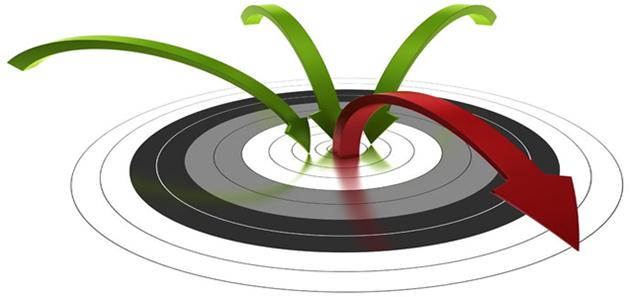After building your website, you need to understand some simple terms that affect how your site is ranked by Google. If you have never heard of the term before, we will take you step by step and you can ask questions on the comment section below. If you already know the term, consider this as a basic refresher course.
Definition of Bounce Rate
Bounce rate is an important factor used by search engines to determine the website rankings. This factor basically shows the percentage of web visitors who are moving away after landing on your site. That is, it shows the percentage of visitors who visit one page and leave immediately without clicking any other page on the site.
There are many reasons why a bounce can occur. For instance, if the web visitor hits the back button their browser, they are directed to a different site. Another reason could be that the visitor has clicked on one of your ads or external links and is taken to a different web page. Any action that causes a visitor to leave the site, right after landing and without visiting any other page, can increase your website’s bounce rate.
The Bounce Rate Formula
A simple formula for bounce rate is
Bounce rate = Visitors that leave after one page /Total number of Visitors
You can calculate the bounce rate of your whole website or every single page on the site. The results allows you to figure out what kind of information your web visitors are looking for. You can use a tool like Google Analytics to keep track of your website bounce rate.
High or Low bounce rate, what is best for your Website?
It is important to maintain a low bounce rate because it means that web visitors are engaging in your content. A web visitor will only click to a second, or third page on your site if they like your content and design. However, some webmasters argue that a low bounce rate could mean that people are confused about your site and they are spending time trying to figure out where to go.
Having a high bounce rate may not be a bad thing depending on the goals of your website. If your main goal is to have visitors take a certain call to action that could lead them off your website then having a high bounce rate is actually good for you. If your website directs users to other external sites for more information then it’s justified if these web pages have a high bounce rate. However, if your website wants to retain customers and make them browse endlessly through multiple pieces of content so that they can buy a particular product or service, make sure you keep the bounce rate as low as possible.
Google Analytics
You can use Google Analytics to determine:
- The kind of content that directs people to more pages on your website
- The content that people view first and last
- Which pages on the site need to be improved(focus on improving the bounce rate of pages with a high number of page views)
- Which pages have the lowest bounce rate and why. This can help you to determine the kind of model your visitors are looking for in order to stay on the site longer
How to Lower Bounce Rate
Before you even get to improve your bounce rate, start by learning more about your content. Which pages receive the most traffic, what keywords have been used to drive this traffic and the demographics data of pages with the lowest bounce? Below are some great tips and ideas to help reduce bounce rate.
- Place internal links to related pages at the end of each piece of content. This will drive the web visitor to another page with similar content and help in lowering the bounce rate.
- On product pages, make sure you provide links that give more information about the product. You can have links to reviews, guides and how to articles on the same product. This can keep the visitor on the site long enough.
- You can also make use of the sidebar (if your web design allows) and use this to include links to content which everyone will enjoy. First time visitors may want to know more about your business or read previous posts on the blog.
- Create engaging content because people will stick around if they like what they are reading. You can even add videos on the pages to increase the average time visitors are spending on a particular page.
- Improve your website design to make it more user-friendly. Content needs to be properly structured and attractive to the reader. A poor design will drive customers away.
- Loading speed is important because nothing affects bounce rate more than a site that takes too long to load. Remove heavy media files that make your web pages slow.
- Make sure your website is mobile friendly. If the content can be accessed on mobile devices and tablets with less hassle, your bounce rate will improve significantly.
- You also need to be mindful of where you place your ads. Intrusive ads can make web visitors click away.









